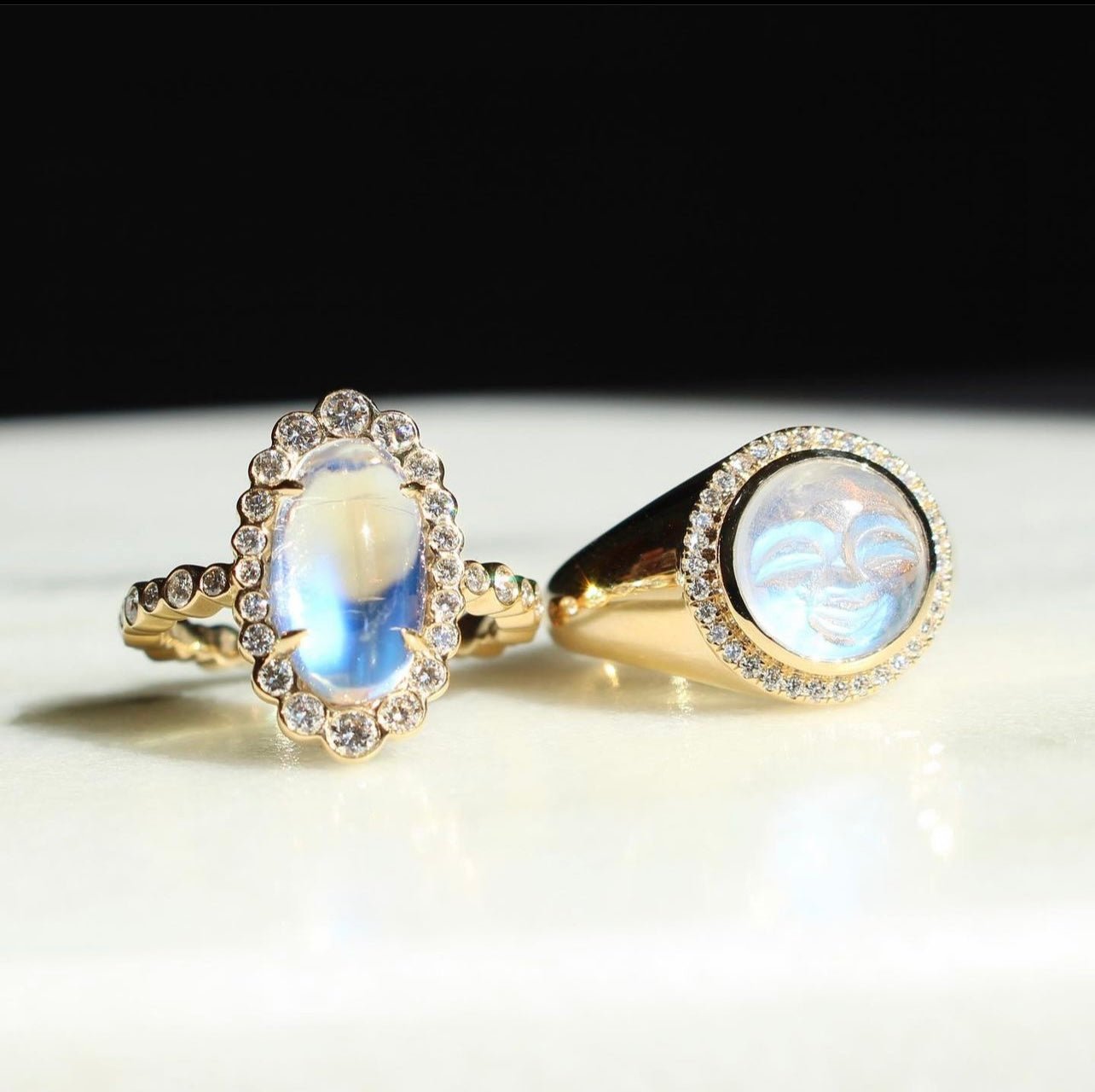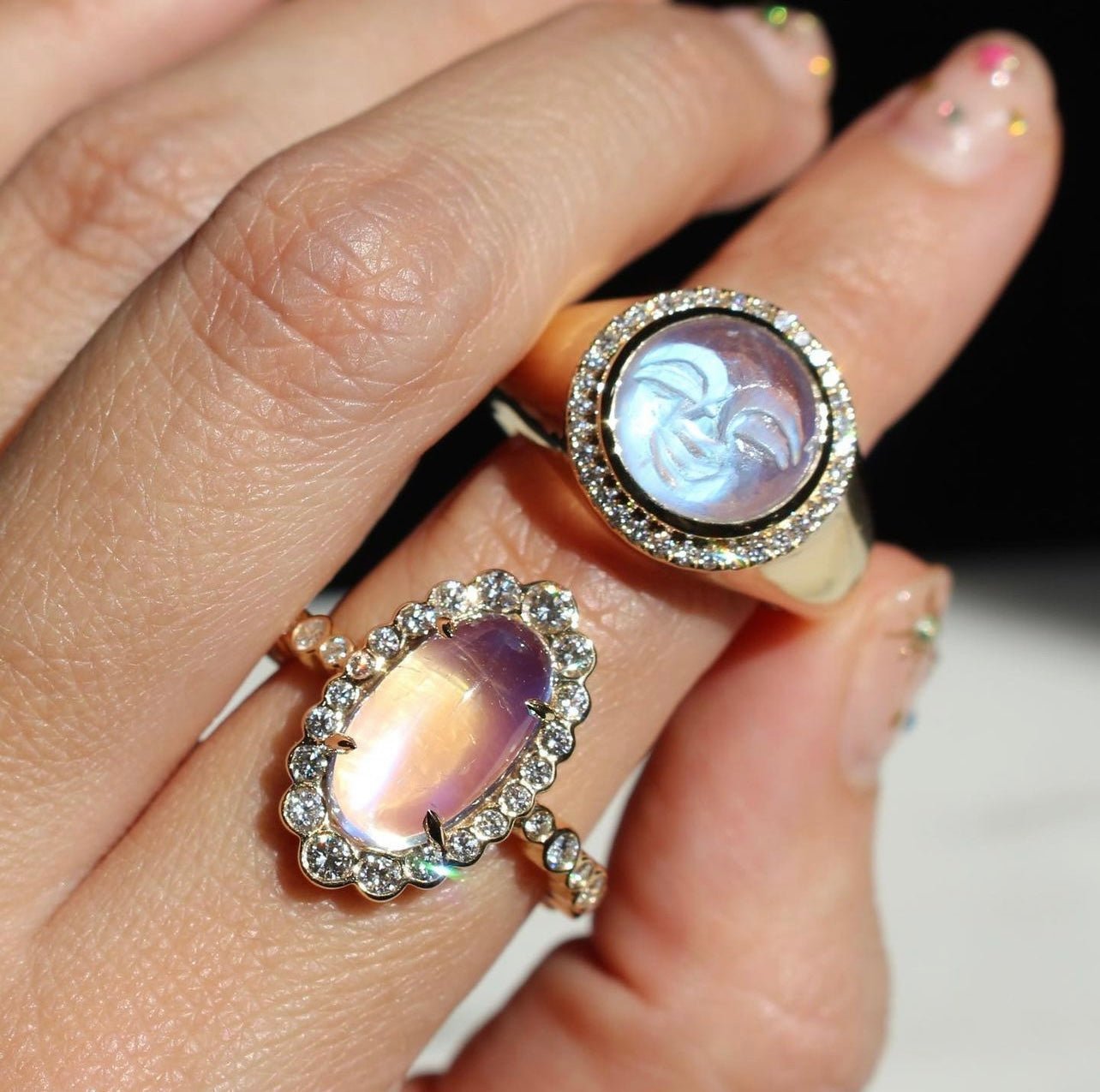Have you ever been referred to as a “diamond in the rough”? The meaning behind the common phrase is a reference to the natural occurrence of the stones themselves, buried and pressurized amongst other rocks deep inside of the Earth, a glimmering piece of precious material among other throwaway minerals.
However, the idea that diamonds are the most priceless and beautiful inclusions for rings and other jewelry designs is misguided. Not to say that a raw diamond isn’t stunning, but here at Mark Henry Jewelry, we prefer something a little more unique.
Besides, abiding predictability in jewelry is boring. We think standing out looks even better on you.
While searching for a diamond alternative, your options vary. There is something for every price range, every quality bracket, and every type of gem connoisseur. Whether you’re looking for a stone that is likely to be recycled after some heavy usage on vacation, or you want an engagement ring that is built to last a lifetime, the options are almost limitless.
Here are our favorite replacements.
Why Do Consumers Choose Diamonds?
Before we describe some of the best alternatives to diamond jewelry, it is important to outline exactly why diamonds are so heavily utilized in designs. There is a universal belief that they are rare, and some people may even (incorrectly) think that diamonds are the rarest gem. This couldn’t be farther from the truth.
Diamonds can have hefty price tags, but it should be mentioned this is not indicative of quality or how long it may last. Investment value is poor, considering they are actually quite easy to come by (how many people do you know with a sparkly diamond on their left hand?). Rarity is determined by how large the supply is. In fact, this ranks diamonds much lower than you might assume in this descriptive category.
It can be stated that diamonds do have an incredible hardness, the highest on the Mohs Scale, with a 10. However, this does not prevent them from being prone to wear and tear just like any other gem, and it shouldn’t be regarded as an inherent security deposit.
Exotic Gems Stand Out
If you’re looking for something that’s really different and worth the expense, check out exotic gems. They’re our favorite at Mark Henry Jewelry, so much so that we actually specialize in their ethical sourcing, production, and sale.
More on our options later, but the high quality and exquisite color of these internationally recognized pieces raise their price-cost value.
Also, diamonds that are ethically sourced tend to be upcharged, so if you are purchasing at a lower price point, chances are the process was not kind to the laborers or the environment.
1. Alexandrite
One of our most prized exotic gems at Mark Henry Jewelry is alexandrite. Found about 200 years ago in the Ural Mountains of Russia, the gem was regarded by Imperial Russia as magical due to its color-changing properties. It swaps a gorgeous, emerald-like green under daylight for a stunning red hue in incandescent light.
At first, the gem was actually believed to be an emerald until the sun set, and it was believed to be a ruby. Its name comes from Czar Alexander II, as it was used heavily in designs of the Russian leaders.
It is so rare that its supply was entirely wiped out due to over-mining in Russia by the late 1800s. Later, it was discovered internationally in countries such as Brazil with varying degrees of prized color changes.
Its color change is the predominant factor in determining its worth, unlike other gems that are valued based on carat size or clarity. Most faceted alexandrite ranges from 0.09ct to 0.14ct., emphasizing just how hard it is to acquire pieces large enough for jewelry placement.
When we do get our hands on adequately-sized pieces, we immediately purchase them and include them in our designs. We are committed to portraying cultural and geographically authentic pieces, and our shaping reflects this.
Some of our alexandrite is geometrically cut, but we also offer classic shapes. There is no reason not to impress your friends with a small fraction of history. Your very own grownup mood ring!

2. Moissanite
Another alternative to a traditional diamond is moissanite. French chemist Dr. Henri Moissan first found this mineral 120 years ago while studying crystalline chemical compositions in an Arizonan meteorite.
This mineral occurs naturally but is harvested inside a lab per a development in the 1990s by the Research Triangle Park in North Carolina. But don’t worry, the process does not harm the environment, so it is still an ethically conscious purchase.
Moissanite is composed of silicon carbide. Since it has only ever occurred in the upper mantle rock or in meteorites, labs have taken the lead in producing it for better accessibility in supply. However, it has been found as an inclusion in diamonds themselves.
It falls at a 9.5 on the Mohs Scale, incredibly close to diamonds. This means it is highly durable and versatile in terms of wearability. Therefore, it is great for use in rings. This mineral is considered essentially identical to diamonds apart from being raw, with the differences only being evident to gemologists under microscopes.
3. Paraíba Tourmaline
If you’re still on an exotic gem kick, Paraíba Tourmaline is an incredible addition to any jewelry collection. It was discovered in the 1980s in Paraíba, Brazil, its namesake. Since then, it has been noted in Mozambique and Nigeria.
Highly regarded for its incredibly brilliant, neon-blue hue, Paraíba Tourmaline has made quite the splash in the fine jewelry industry and can present with other hints of green, blue, or violet.
Traditional tourmalines never have such a dazzling color due to the lower amount of copper found inside. It is priced similarly to sapphire and is on the more expensive side of diamond replacements. However, this time, the rarity matches the hype.
At Mark Henry Jewelry, we cut these gems to enhance their neon colors and typically place them in designs beside diamonds or sapphires, with white or yellow gold bands/chains in 18k.

4. Cubic Zirconia
One of the most fascinating and price-conscious alternatives to diamonds is cubic zirconia. While it isn’t necessarily of the same value as the above-mentioned gems and by no means rare, it surprisingly faces up well against diamonds in a lot of other properties.
While it sounds similar to the all-natural white zircon, cubic zirconia is entirely lab-grown and composed of zirconium dioxide. It also has cub crystalline formations present in diamonds too. This contributes to how closely the two visually resemble each other.
Cubic zirconia was formed in the 1970s when experimenting Russian scientists were using various synthetic materials in hopes of creating a laser. Singular cubic zirconia crystals were created as a result, and the scientists were shocked by their clarity and shine.
These pieces are, in fact, completely clear, despite diamonds often having muted, colorful tints. Another difference is that diamonds tend to sparkle more prominently.
It is less durable than diamonds by a significant amount, usually losing its sparkle after two years of use post-production. It does rank as an 8.5 on the Mohs scale, which is high, but it should be noted that dust ranks as a 7.
Simple actions like housework are all that it takes to scratch cubic zirconia, especially if it has been placed in a ring. It also tends to develop a cloudy haze over time.
Yet the price simply cannot be beaten, with some going for as little as $20 to $40. Buyer beware because these designs usually utilize brass or copper plating with gold or platinum. If your purchase was over $100, you’re more likely to have invested in a 14k gold or platinum band. But, you should consider whether or not this is worth it for the short shelf life of the cubic zirconia itself.
If you’re looking for a piece to wear while swimming, lounging at the beach, camping, or otherwise doing strenuous activities prone to wear and tear on jewelry, cubic zirconia is an excellent diamond alternative. Less to worry about for the same sparkle, at a price that allows for frequent replacement.
Amazing Alternatives
While diamonds are incredibly popular and are likely to continue trending for centuries to come, it would be remiss not to share the vast options for alternatives to this stone in jewelry. We want to forge a community of educated consumers who are not only able to differentiate between the value of different diamond types but to look past what is common and search for their own priceless designs.
For a piece that may be passed down to generations of family and friends, investing in something special is paramount.
If you want even more options than the four listed above, check out our gift guide, featuring other fine gems such as turquoise and moonstone. Remember to never hesitate to reach out to us with any questions you may have about purchasing diamond alternatives. Jewelers and geologists love to assist!
Sources:
What's the Best Diamond Alternative? | Gem Society


